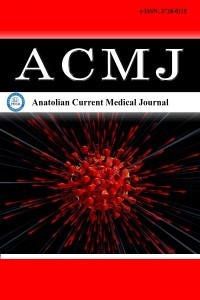1.
Kanat M, DeFronzo RA, Abdul-Ghani MA. Treatment ofprediabetes. World J Diabetes. 2015;25(12):1207-1222. doi: 10.4239/wjd.v6.i12.1207
2.
Leahy JL. Natural history of beta-cell dysfunction in NIDDM.Diabetes Care. 1990;13(9):992-1010. doi: 10.2337/diacare.13.9.992
3.
Kaiser N, Leibowitz G, Nesher R. Glucotoxicity and beta-cellfailure in type 2 diabetes mellitus. J Pediatr Endocrinol Metab.2003;16(1):5-22. doi: 10.1515/jpem.2003.16.1.5
4.
Marchetti P, Dotta F, Lauro D, Purrello F. An overview ofpancreatic beta-cell defects in human type 2 diabetes: implicationsfor treatment. Regul Pept. 2008;146(1-3):4-11. doi: 10.1016/j.regpep.2007.08.017
5.
Davies MJ, Aroda VR, Collins BS, et al. Management ofhyperglycemia in type 2 diabetes, 2022. A consensus report bythe American Diabetes Association (ADA) and the EuropeanAssociation for the Study of Diabetes (EASD). Diabetes Care.2022;45(11):2753-2786. doi: 10.2337/dci22-0034
6.
Seaquist ER, Anderson J, Childs B, et al. Hypoglycemia and diabetes:a report of a workgroup of the American Diabetes Association andthe Endocrine Society. Diabetes Care. 2013;36(5):1384-1395. doi:10.2337/dc12-2480
7.
Del Prato S, Marchetti P. Targeting insulin resistance and beta-cell dysfunction: the role of thiazolidinediones. Diabetes TechnolTher. 2004;6(5):719-731. doi: 10.1089/dia.2004.6.719
8.
Ovalle F, Bell DS. Effect of rosiglitazone versus insulin on thepancreatic beta-cell function of subjects with type 2 diabetes. DiabetesCare. 2004;27(11):2585-2589. doi: 10.2337/diacare.27.11.2585
9.
Gastaldelli A, Ferrannini E, Miyazaki Y, Matsuda M, Mari A,DeFronzo RA. Thiazolidinediones improve beta-cell functionin type 2 diabetic patients. Am J Physiol Endocrinol Metab.2007;292(3):E871-E883. doi: 10.1152/ajpendo.00551.2006
10.
Buteau J, El-Assaad W, Rhodes CJ, Rosenberg L, Joly E, PrentkiM. Glucagon-like peptide-1 prevents beta cell glucolipotoxicity.Diabetologia. 2004;47(5):806-815. doi: 10.1007/s00125-004-1379-1386
11.
Abdul-Ghani MA, Norton L, Defronzo RA. Role of sodium-glucose cotransporter 2 (SGLT 2) inhibitors in the treatment oftype 2 diabetes. Endocr Rev. 2011;32(4):515-531. doi: 10.1210/er.2010-0029
12.
Katz PM, Leiter LA. The role of the kidney and SGLT2 inhibitors intype 2 diabetes. Can J Diabetes. 2015;39(5):167-175. doi: 10.1016/j.jcjd.2015.09.001
13.
Li X, Zhou ZG, Qi HY, Chen XY, Huang G. Replacement ofinsulin by fasting C-peptide in modified homeostasis modelassessment to evaluate insulin resistance and islet β cell function.Zhong Nan Da Xue Xue Bao Yi Xue Ban. 2004;29(4):419-423.
14.
Russell C, Petrie J. Chapter 6: GLP-1 receptor agonists. In: FisherM, Mckay GA, Llano A, eds. Diabetes Drug Notes. John Wileyand Sons: 2022:130-160.
15.
Kaneto H, Matsuoka TA, Nakatani Y, et al. Oxidative stress,ER stress, and the JNK pathway in type 2 diabetes. J Mol Med.2005;83(6):429-439. doi: 10.1007/s00109-005-0640-x
16.
Kanda Y, Shimoda M, Hamamoto S, et al. Molecular mechanismby which pioglitazone preserves pancreatic beta-cells inobese diabetic mice: evidence for acute and chronic actionsas a PPARgamma agonist. Am J Physiol Endocrinol Metab.2010;298(2):278-286. doi:10.1152/ajpendo.00388.2009
17.
Shimoda M, Kanda Y, Hamamoto S, et al. The human glucagon-like peptide-1 analogue liraglutide preserves pancreatic betacells via regulation of cell kinetics and suppression of oxidativeand endoplasmic reticulum stress in a mouse model of diabetes.Diabetologia. 2011;54(5):1098-1108. doi: 10.1007/s00125-011-2069-9
18.
Wang AP, Li X, Zheng Y, et al. Thiazolidinediones protect mousepancreatic b-cells directly from cytokine-induced cytotoxicitythrough PPAR-dependent mechanisms. Acta Diabetol.2013;50(2):163-173. doi: 10.1007/s00592-010-0239-8
19.
Marmentini C, Guimarães DSPSF, de Lima TI, et al. Rosiglitazoneprotects INS-1E cells from human islet amyloid polypeptide toxicity.Eur J Pharmacol. 2022;928:175122. doi: 10.1016/j.ejphar.2022.175122
20.
Kanno A, Asahara SI, Kawamura M, et al. Early administrationof dapagliflozin preserves pancreatic b-cell mass through a legacyeffect in a mouse model of type 2 diabetes. J Diabetes Investig.2019;10(3):577-590. doi: 10.1111/jdi.12945
21.
Hansen HH, Jelsing J, Hansen CF, et al. The sodium glucosecotransporter type 2 inhibitor empagliflozin preserves b-cellmass and restores glucose homeostasis in the male zuckerdiabetic fatty rat. J Pharmacol Exp Ther. 2014;350(3):657-664.doi: 10.1124/jpet.114.213454
22.
Kimura T, Kaneto H, Shimoda M, et al. Protective effects ofpioglitazone and/or liraglutide on pancreatic β-cells in db/db mice: Comparison of their effects between in an early andadvanced stage of diabetes. Mol Cell Endocrinol. 2015;15:400:78-89. doi: 10.1016/j.mce.2014.11.018
23.
Abd El Aziz MS, Kahle M, Meier JJ, Nauck MA. A meta-analysiscomparing clinical effects of short- or long-acting GLP-1 receptoragonists versus insulin treatment from head-to-head studies intype 2 diabetic patients. Diabetes Obes Metab. 2017;19(2):216-227. doi: 10.1111/dom.12804
24.
Nauck MA, Quast DR, Wefers J, Meier JJ. GLP-1 receptor agonistsin the treatment of type 2 diabetes-state-of-the-art. Mol Metab.2021;46:101102. doi: 10.1016/j.molmet.2020.101102
25.
Brunzell JD, Davidson M, Furberg CD, et al. American DiabetesAssociation; American College of Cardiology Foundation.Lipoprotein management in patients with cardiometabolic risk:consensus statement from the American Diabetes Associationand the American College of Cardiology Foundation. DiabetesCare. 2008;31(4):811-822. doi: 10.2337/dc08-9018
26.
Betteridge DJ. Effects of pioglitazone on lipid and lipoproteinmetabolism. Diabetes Obes Metab. 2007;9(5):640-647. doi: 10.1111/j.1463-1326.2007.00715.x
27.
Sun F, Wu S, Wang J, et al. Effect of glucagon-like peptide-1receptor agonists on lipid profiles among type 2 diabetes:a systematic review and network meta-analysis. Clin Ther.2015;37(1):225-241. doi: 10.1016/j.clinthera.2014.11.008
28.
Sánchez-García A, Simental-Mendía M, Millán-Alanís JM,Simental-Mendía LE. Effect of sodium-glucose co-transporter2 inhibitors on lipid profile: a systematic review and meta-analysis of 48 randomized controlled trials. Pharmacol Res.2020;160:105068. doi: 10.1016/j.phrs.2020.105068
29.
Baker WL, Smyth LR, Riche DM, Bourret EM, Chamberlin KW,White WB. Efects of sodium-glucose co-transporter 2 inhibitorson blood pressure: a systematic review and meta-analysis. J AmSoc Hypertens. 2014;8(4):262-275. doi: 10.1016/j.jash.2014.01.007
30.
Wanner C, Inzucchi SE, Lachin JM, et al. Empaglifozin andprogression of kidney disease in type 2 diabetes. N Engl J Med.2016;375(4):323-334.
31.
Muskiet MHA, Tonneijck L, Smits MM, et al. GLP-1 and thekidney: from physiology to pharmacology and outcomes indiabetes. Nat Rev Nephrol. 2017;13(10):605-628.
32.
Van Ruiten CC, Smits MM, Kok MD, et al. Mechanismsunderlying the blood pressure lowering effects of dapagliflozin,exenatide, and their combination in people with type 2 diabetes:a secondary analysis of a randomized trial. Cardiovasc Diabetol.2022;21(1):63. doi: 10.1186/s12933-022-01492-x

